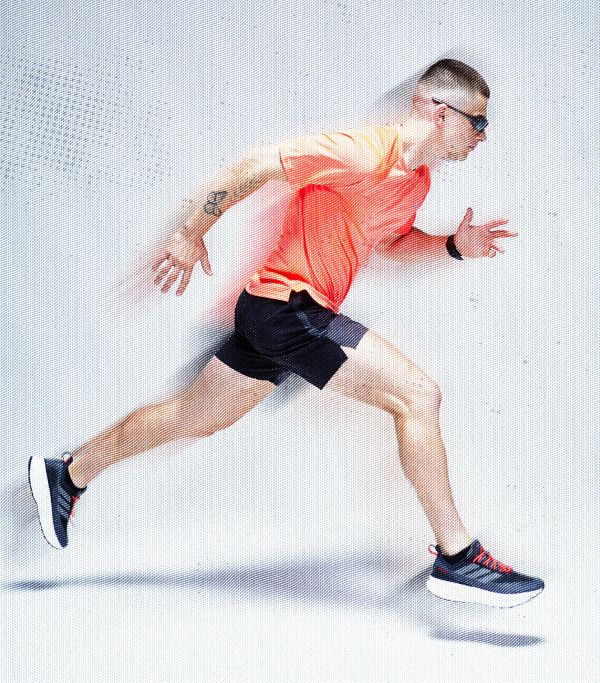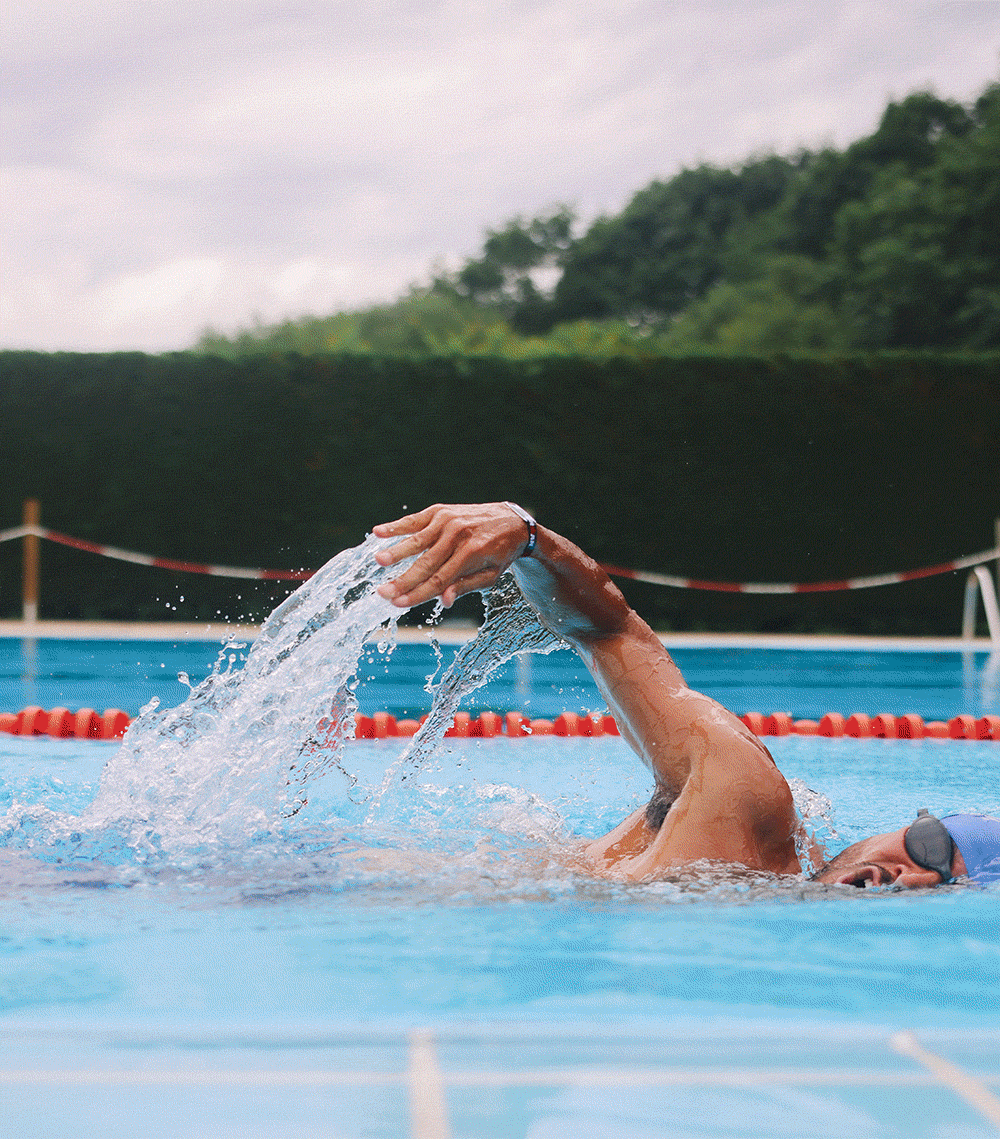Beyond Basecamp: Trailberg’s Journey to Everest's Summit
On May 18th 9:10am, Trailberg athlete Ben Wright reached the summit of Mount Everest - 8,848 meters above sea level. Our in-house product team collaborated closely with Ben to design a fully customised summit suit, built specifically to endure -34°C temperatures found on Everest’s upper slopes.
Developing technical garments for peak athletic performance is central to Trailberg’s identity. Our mission is to equip outdoor adventurers with high-performance gear engineered to withstand harsh outdoor elements.
Project Peaks has marked a major milestone for Trailberg as we partnered with seasoned mountaineer Ben Wright. Following a successful ascent in Trailberg’s summit suit, we’re sharing the story of how Trailberg equipped Ben for one of the most challenging goals of his climbing career.
Behind The Seams: Building The Ultimate Climbing Shell
Designing technical outerwear is no challenge for Trailberg’s in-house product developers. Take Trailberg's recent Windbreaker collection, Slate: it features ventilated chest panels for added breathability and a triple-adjustment protective storm hood. For colder conditions, the Eiger Puffer Coat was designed with down insulation and 700-fill power to retain warmth.
But the summit suit was unlike any previous project; it demanded an entirely new level of function. The early days of the design process were focused on safety, requiring intensive testing and design development to meet the specific needs of high-altitude climbing.
Striking the right balance between waterproof protection, breathability, and warmth was key to both Ben and the team. After a long time in the making, Trailberg delivered a suit built for the conditions above 8000m.
The final product featured a hydrophobic down filling designed to repel moisture while retaining warmth. Lightweight enough for ease of movement yet insulated for extreme cold, the suit used 900 fill power insulation made from 90% goose down and 10% goose feather.
The suit was custom-fitted to Ben’s body, with separate fabrics at the knees and elbows to increase durability during technical climbs. A high-visibility red outer shell was used to ensure contrast against snowy terrain. Once the design was finalised, the suit went through a series of tests.
After proving it could withstand high-elevation conditions, resist tearing, remain flexible in -50°C temperatures, and repel water, the suit was expedition-ready.

Trail Tested: The Summit Suit's Journey
Three weeks after reaching the summit of Everest, Ben reflected on the performance of the Trailberg summit suit. ‘It was amazing,’ he said. ‘At no point was my body cold, the suit performed perfectly.’
At Camp 4, where temperatures dropped to -30°C, regulating body temperature was critical. ‘When climbing, it was perfect,’ Ben noted. ‘When stationary, I wore it to sleep, and it kept me warm all night.’
On Everest, protection from extreme cold and the risk of hypothermia is crucial to survival. Research shows that exposure to severe weather accounts for roughly 25% of fatalities above 7000m, with inadequate insulation playing a major role.
But warmth alone wasn’t enough. Functionality also had to be seamless.
‘The weight of the suit was really light,’ Ben explained. ‘It was really spacious, so when you’re climbing, it was easy to move around.’
Trailberg’s design team also focused on the finer details that make a difference at altitude. Long zip toggles with high-performance zippers ensured easy access with gloved hands, and its flexible structure supported Ben’s mobility when climbing near-vertical slopes.
Ben also highlighted the performance of the hood: ‘No wind got in, which helped a lot.’
How Long Does It Take To Climb Mount Everest?
The majority of expeditions to Mount Everest take around two months to complete. From arrival at base camp to return, Ben completed the summit in just less than 60 days.
But the real preparation began long before setting foot on the mountain. Typically, a 6-12 month training plan is standard for Everest climbers. Focusing on cardiovascular endurance, strength, and altitude acclimatisation is essential for coping with the extreme conditions above 8000m.
In the final month before departure, Ben gradually acclimated his body to the low-oxygen environment by using an altitude machine to condition his body. But the challenge wasn’t only physical.
‘You can’t predict what’s going to happen on the mountain,’ Ben said. ‘So, it’s scary.’
Mental preparation was just as important, as it involved facing the emotional challenge of leaving his family for weeks at a time. To support Ben beyond just gear, Trailberg also arranged for a second Sherpa to join the expedition, prioritising safety and peace of mind.
‘Having the insurance and the extra Sherpa gave me that extra assurance,’ Ben said. ‘We were eliminating all the risks.

Everest Death Zone: The Mental Challenge
‘Going up the death zone, anything can happen,’ Ben reflects.
The area above 8,000 meters is known as the Death Zone, where the human body can no longer acclimate. Due to the extreme conditions and the dangers of recovery efforts, more than 200 climbers who lost their lives on Everest remain on the mountain. Ben encountered his first body just before reaching Camp 4.
‘That was a big mental challenge [...] One day, there was a climber just like me with the same goal.’
Close to turning back, Ben recalls, ‘you can hear the ice cracking around you [...] massive blocks of ice above you [...] It was just about surviving at that point.’
At 8,000m, cognitive function deteriorates, and climbers can experience confusion and disorientation. ‘You can’t think straight,’ Ben admitted.
He faced a moral crossroads during his descent from the summit. Ben came across a lone climber seated in the snow, snow-blind and no longer able to continue. The climber had attempted to reach the summit alone after leaving behind his sick Sherpa and was now stranded.
Ben recalled thinking, ‘Do I save myself, or help him out?’
Ben made a split-second decision. He clipped the climber into his own safety line, guiding him down by having him hold onto his backpack.
‘It wasn’t safe,’ Ben said. ‘But in the moment, you don’t think about it.’
How Did It Feel to Be Sponsored by Trailberg?
After reaching the top, Ben described the Summit as surreal: ‘I can’t believe I’ve made it [...] The realisation of summiting Everest was incredible.’
Reflecting on Trailberg’s support throughout the journey, he said ‘It means everything. To support my biggest dream ever, we made it happen.’
His advice for readers is to ‘just enjoy life, make the most of it, and don’t take anything for granted.’

The Next Steps
With Project Peaks complete, Trailberg remains committed to supporting global adventurers with high-performance outerwear. From trail runners and hikers to cyclists and alpine explorers, our Twinsets, Windsets, and Trisets are built to go the distance.
Looking ahead at upcoming releases, we have developed a heavyweight jacket inspired by the Everest suit, set to bring expedition-level innovation to everyday outdoor wear.
In the meantime, explore our latest collections, and watch the full interview with Ben Wright to hear his story in his own words.
‘Believe anything's possible if you put the hard work in…take the risk’ - Ben Wright.







